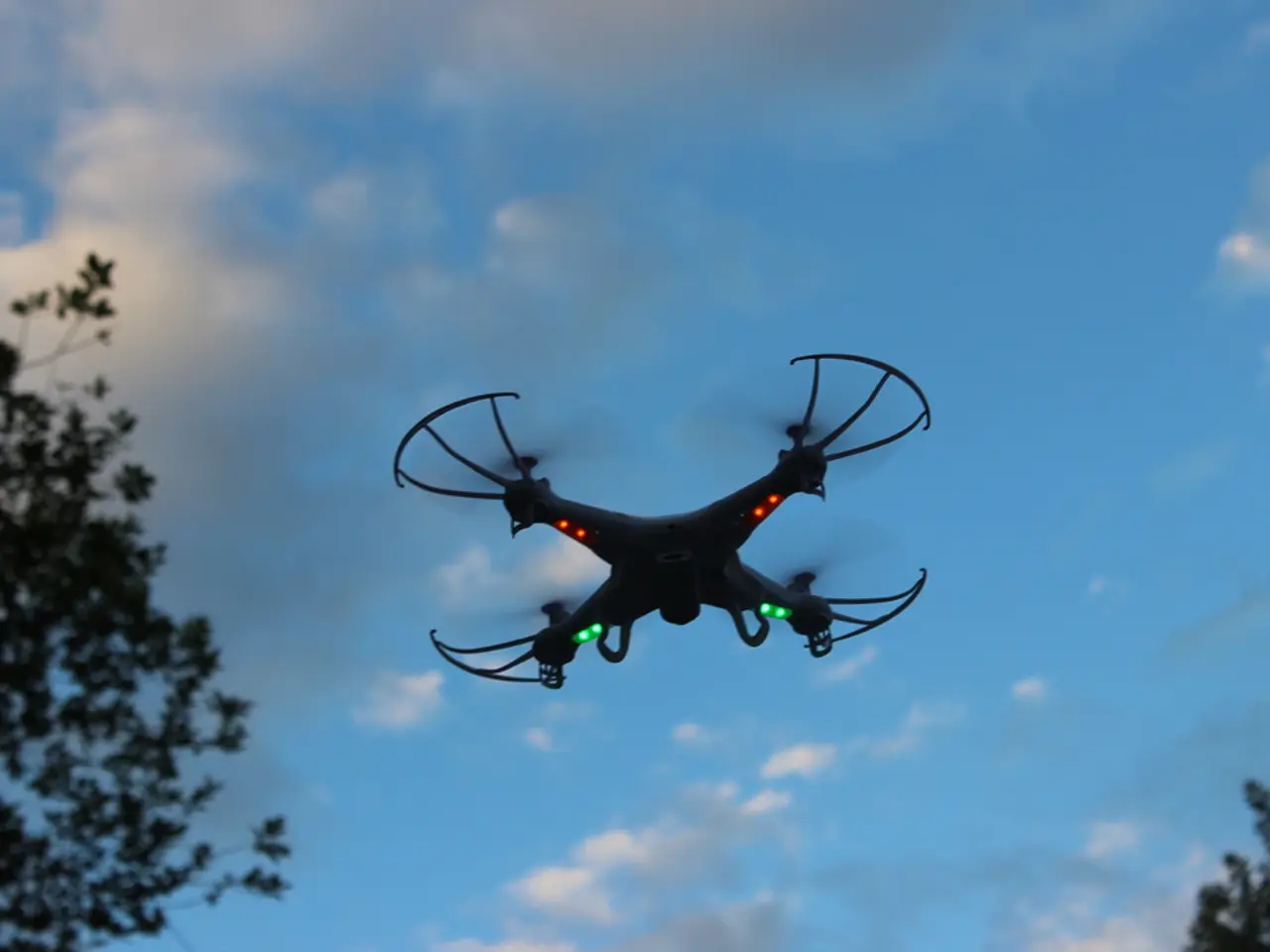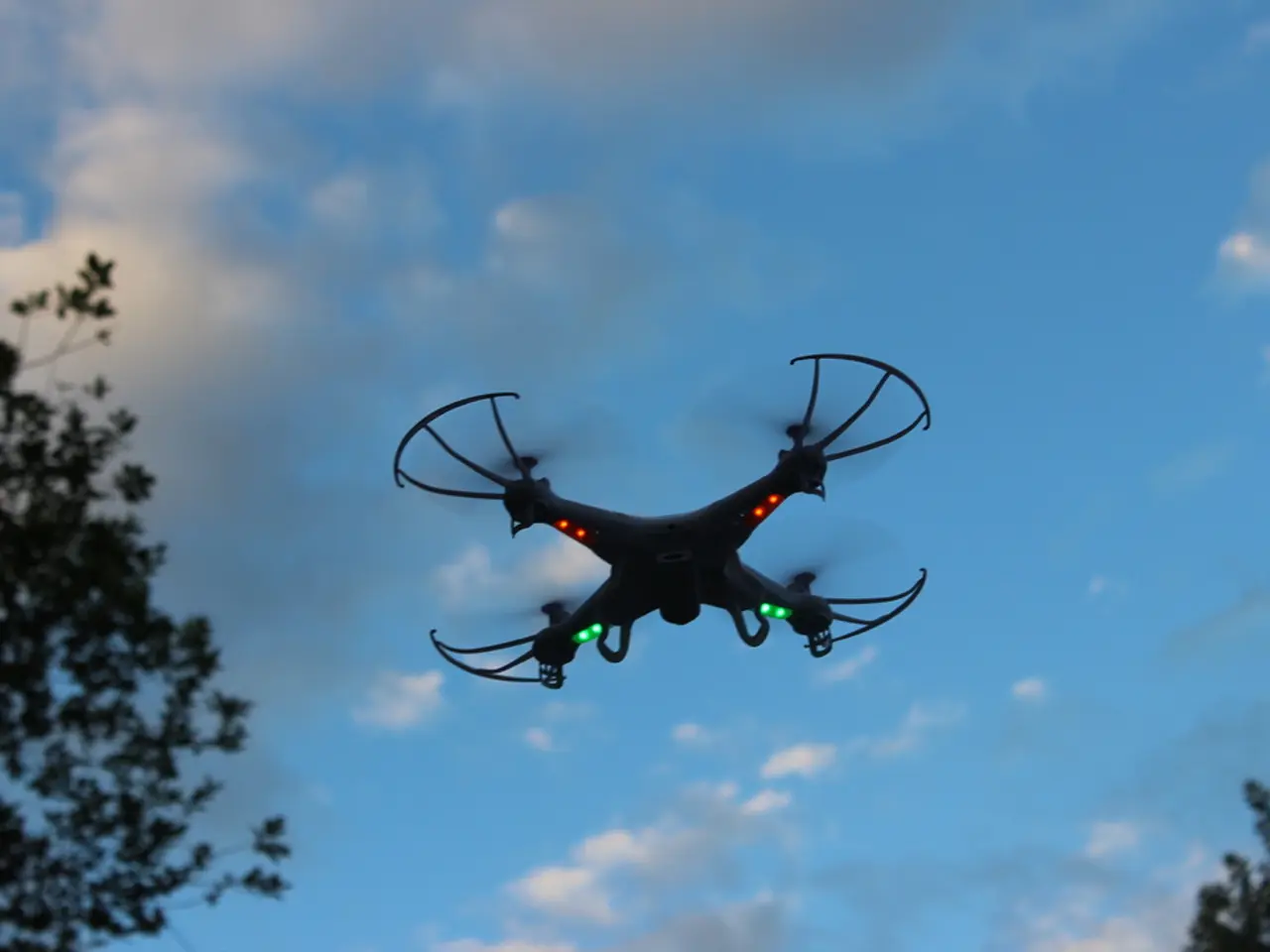Mysterious Flying Vehicle: The Enigmatic Nemeth Parasol Unveiled
The Nemeth Parasol, designed by Steven Paul Nemeth in 1934, was a groundbreaking, round-winged aircraft that made headlines in popular newspapers and magazines such as Modern Mechanix and Popular Science following its test flight[1][2][3][4]. This unique aircraft, with its distinct parasol-like wing structure, was intended to revolutionize personal aviation, offering improved safety and ease of use.
The Nemeth Parasol's defining feature was its circular parasol wing, which sat above the fuselage, providing excellent visibility and stability[2]. This innovative design, a departure from conventional fixed-wing aircraft, aimed to improve stability and slow flight characteristics, making flying safer and more accessible for personal pilots[1][2][3][4].
During its test flight, the Nemeth Parasol landed safely at a speed of 25 miles per hour, thanks to its two ailerons at the rear, which helped it land safely at slow speeds[1]. The aircraft reached a top speed of 135 miles per hour during the test flight, and despite Steven P. Nemeth stalling the Nemeth Parasol in the air with its motor off, the aircraft managed to recover[1].
Despite its innovative design and successful test flight, the Nemeth Parasol never became commercially successful. However, its influence can be seen in other experimental projects, particularly in military aircraft models that explored alternative wing geometries for enhanced maneuverability and safety[1][2][3][4]. Some examples include the Sack AS-6, "the Flying Flapjack", Avrocar, and other unconventional designs.
The Nemeth Parasol was a product of its time, part of a broader effort in the early 20th century to rethink aircraft safety and control by experimenting with unconventional wing shapes[1][2][3][4]. Other inventions from this era, such as Alexander Lippisch's Aerodyne and "The Pregnant Guppy", also pushed the boundaries of aviation but, like the Nemeth Parasol, did not achieve commercial success[1].
Over time, the Nemeth Parasol was largely forgotten about, but its legacy continues to inspire aviation enthusiasts and historians. Its inventor, Stephen P. Nemeth, a flight instructor at McCook field, designed the Nemeth Parasol as a small plane intended for personal use and easy operation[1]. Despite never being put into production, the Nemeth Parasol remains a unique aircraft worth learning about due to its inventiveness and distinctive design.
[1] Modern Mechanix Magazine, "The Nemeth Parasol: A New Airplane Design", March 1934. [2] Popular Science, "The Nemeth Parasol: A Revolutionary Aircraft", April 1934. [3] Smithsonian National Air and Space Museum, "The Nemeth Parasol: A Forgotten Innovation". [4] Aviation History Magazine, "The Nemeth Parasol: A Pioneer in Experimental Aviation", September 2018.
The Nemeth Parasol, despite never achieving commercial success, has influenced other experimental projects, particularly in military aircraft models that explore alternative wing geometries for enhanced maneuverability and safety, such as the Sack AS-6, "the Flying Flapjack", Avrocar, and other unconventional designs.
Stephen P. Nemeth, the flight instructor at McCook field who designed the Nemeth Parasol, also conceptualized it as a small plane intended for personal use and easy operation, not just in the realm of aviation, but also in transportation and technology, industries where innovation and ease of use are paramount.







